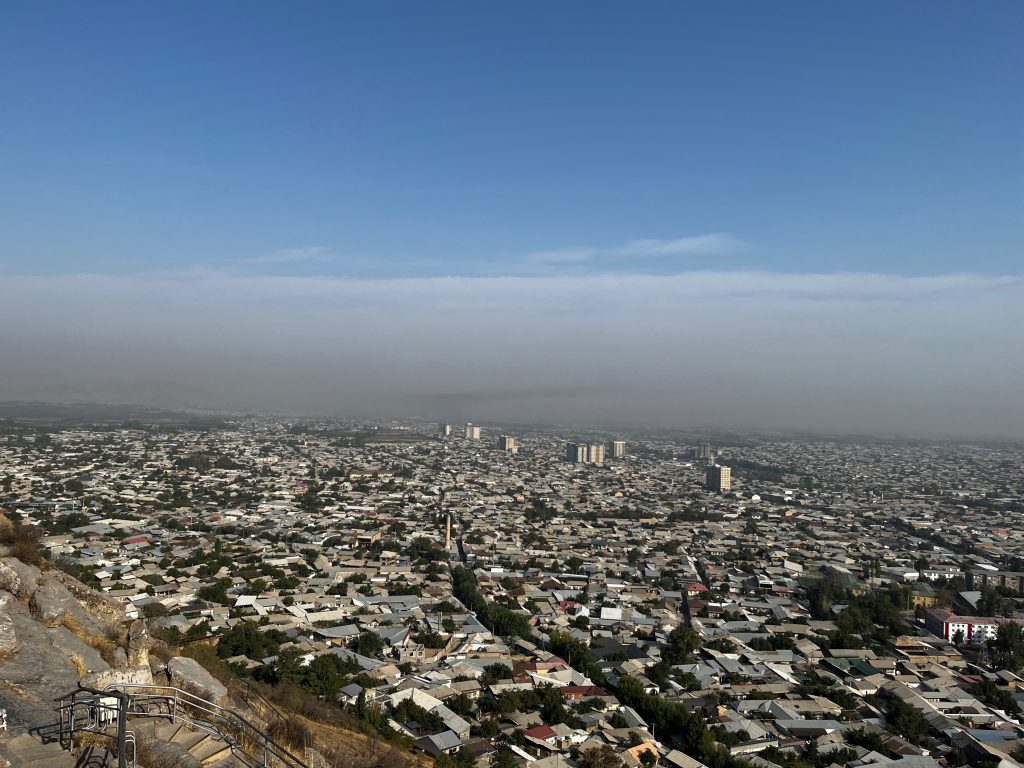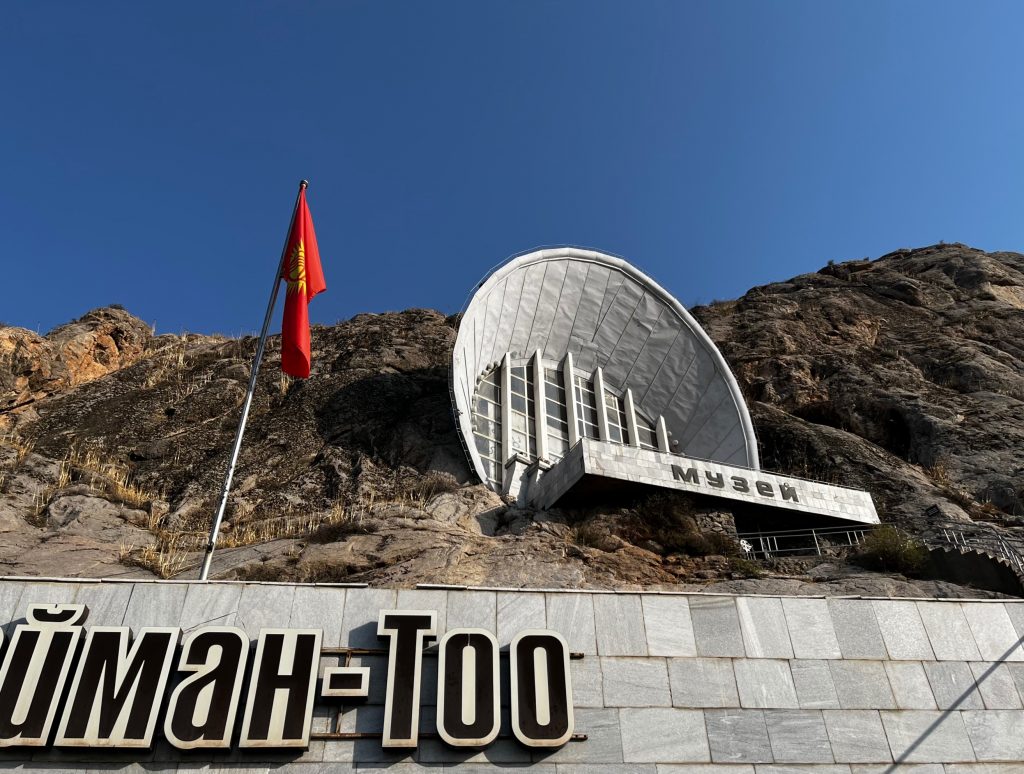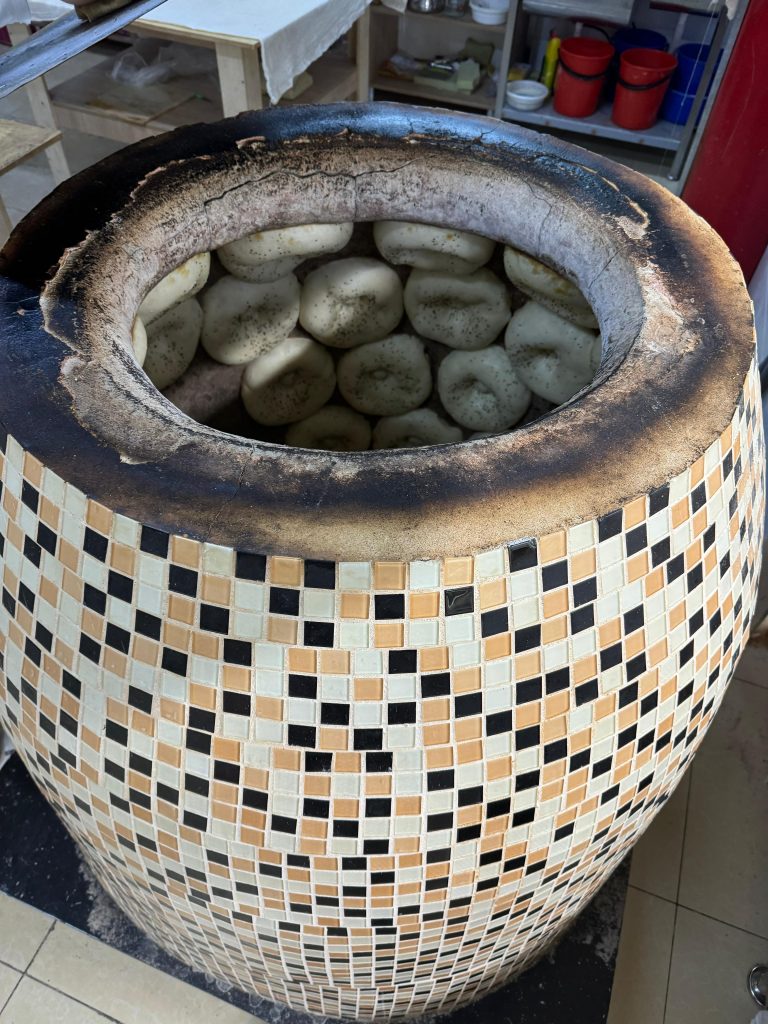There is a joke in Osh that, for a city with over 3,000 years of history, there is precious little to physically show for it.
Sadly, this is a pretty reasonable conclusion. Although this phenomenon is not unique in Central Asia – Khujand in Tajikistan very much falls into this category – it is especially notable here. After all, you are in a region where you are spoiled for beautiful and historic cities, Samarkand and Bukhara being the most obvious examples.
But while you may not pull off your dream Insta photo shoot here, Osh is one of the most thought-provoking places in the whole region. Indeed, some visitors have said that it is the city that is most representative of Central Asia. Let me explain why.
A (brief) history of Osh:
As mentioned, Osh has been a city for at least 3,000 years, and its history is intimately linked with that of the wider Silk Road. It’s known as the “Capital of the South” in Kyrgyzstan.
It is located in the fertile Fergana Valley, which is home to about half of Central Asia’s population and is now split between modern-day Kyrgyzstan, Tajikistan, and Uzbekistan. Osh was a key stop on the ancient Silk Road and served as a bustling trade hub halfway between China, the Middle East, and Europe. Since its foundation, Osh has come under the control of the Saka, Persian, Greek, Kushan, Arab and Turkic empires.

The Mongols destroyed much of the city in the 13th century, but Osh recovered. Its control bounced back and forth between local Khanates before eventually being consolidated under the Khanate of Kokand by 1762.
Certainly within Kyrgyzstan, the most legendary figure to come from the Osh region is Kurmanjan Datka, better known as the “Queen of the South.” She was a female tribal leader who, realizing that her people would never be able to beat the Russians, negotiated the very best settlement in return for them being annexed into the empire. Her face adorns the 50 Som note, and her statue has pride of place in Osh.
As the Russian Empire gave way to the USSR, the city came under the control of the Turkestan ASSR. There is a common myth that Stalin divided the Ferghana in a deliberately arbitrary way, as to avoid any one ethnic group challenging his authority. It’s where the term “divide and conquer” comes from, but there’s no truth that this actually happened.
Instead, local tribes and power brokers – in collaboration with Moscow – drew the constituent republics along ethnic lines, with no expectation that they would ever form international borders. This is where Osh hit a significant roadblock.
So why is it so diverse?
It’s probably clear by now, but Osh’s rich cultural heritage has been shaped by diverse influences. This has created a broad mosaic of different influences that have made the city what it is today.
Historically, the city had been majority Uzbek and was twinned with the larger city of Andijan one hour to the west. However, since the policies of collectivization, Kyrgyz nomads were forced to come down from the mountains, with many of them settling in Osh. To this day, the city therefore has equal numbers of Uzbeks and Kyrgyz.
In a compromise, Andijan was given to the Uzbek SSR, with Osh being given to the Kyrgyz SSR. The boundary between the two was set just beyond the city limits of Osh. This was obviously controversial, especially for the ethnic Uzbeks living in Osh, who felt betrayed by those who arbitrated the border.
While the Ferghana Valley and Osh have long been home to dozens of ethnic groups, the area became even more diverse when Stalin deported large numbers of minorities from across the USSR to Central Asia.
Ethnic Koreans, Tatars, Turks, Dungans, Chechens, Ukrainians, and Ingushs were all deported to Osh and the surrounding area, with this list being far from exhaustive. Jamala, the Ukrainian winner of the 2016 Eurovision Song Contest, was born in Osh to Crimean Tatar parents who had been deported there.
In Independent Kyrgyzstan, Osh is generally a safe and prosperous city. However, as recently as 2010, riots between ethnic Kyrgyz and Uzbeks have forced many of the latter to flee. Public figures have made inflammatory statements in parliament, including suggestions that dissatisfied Uzbeks should leave the country. There are accusations of a low representation of Uzbeks in Kyrgyz public services, especially law enforcement.

Check out the very uniquely-shaped museum that is built into Suleyman Mountain
Today, the city manages to feel neither Kyrgyz nor Uzbek. However, is notably more conservative than the north of the country, which remains heavily Russified. It is a facinating place to see having visited the rest of either Kyrgyzstan or Uzbekistan. When I flew with my dad from Bishkek to Osh, for example, he already thought that we had left the country, such are the cultural differences between the two cities.
What is there to see in Osh?
The city is home to the sacred Suleyman Mountain, Kyrgyzstan’s only UNESCO World Heritage site, which has been a center of pilgrimage for centuries. This is a very pleasant walk of a kilometre or so, which our group did early on a Sunday morning before heading to the Uzbek border. Granted, it was late September, but the weather was perfect, and it was a great way to wake up. You can also break the journey by visiting the cute little museum, about halfway on the path.
Osh’s Bazaar is perhaps the most authentic market experience you will have while in this region. Instead of souvenir stands and cheap, imported home goods, you will see traders baking samsas – Central Asia’s answer to the South Asian samosa – in clay tandoor ovens. You’ll also view babushkas selling traditional herbs, and schoolchildren helping their parents squeeze fresh pomegranates for delicious juice.

Finally, Soviet History fans are in for a treat. Osh still has a 30m-high Lenin statue, taking pride of place in one of the city’s most beautiful parks. There is still great affection for the USSR in Kyrgyzstan, especially in the Ferghana. Many people long for a time when they could visit relatives across in Uzbekistan with little hassle.
How can I visit Osh?
YPT visits Kyrgyzstan at least 4 times a year as part of our “Five Stans” trip, spending a night in Osh having crossed from Uzbekistan, and before flying to Bishkek.
Alternatively, if you want to organize a private tour to suit your needs, time, and interests, let us know and we will craft the itinerary of your dreams. We can put together anything from a city tour to more specialized schedules such as architecture or political tours.
Our Pamir Highway adventure, which runs annually, ends in Osh. We recommend extending your time to discover the city and recuperate after this epic road trip!





